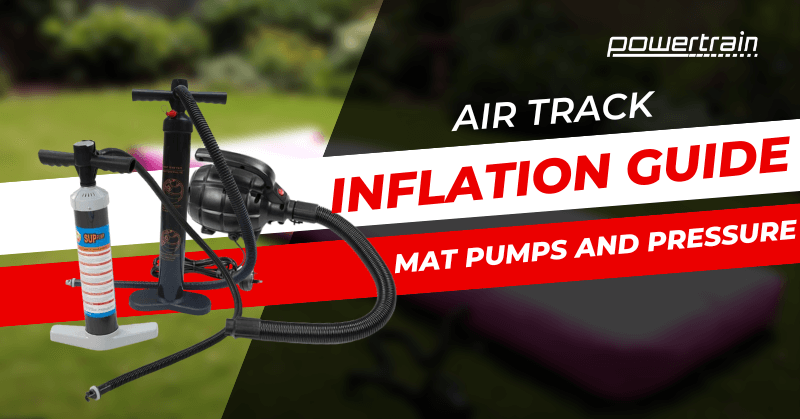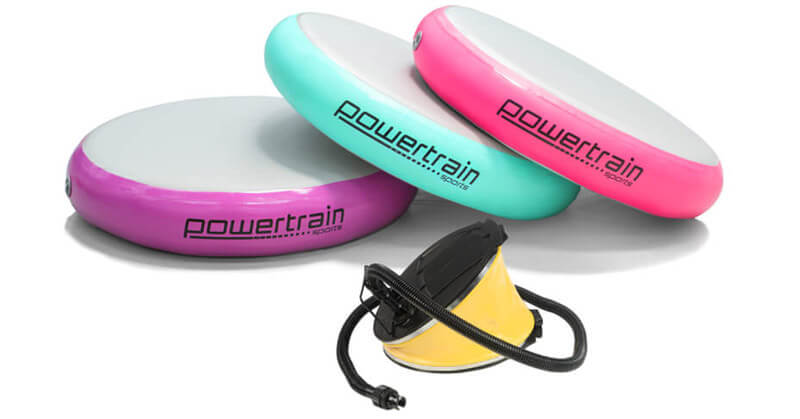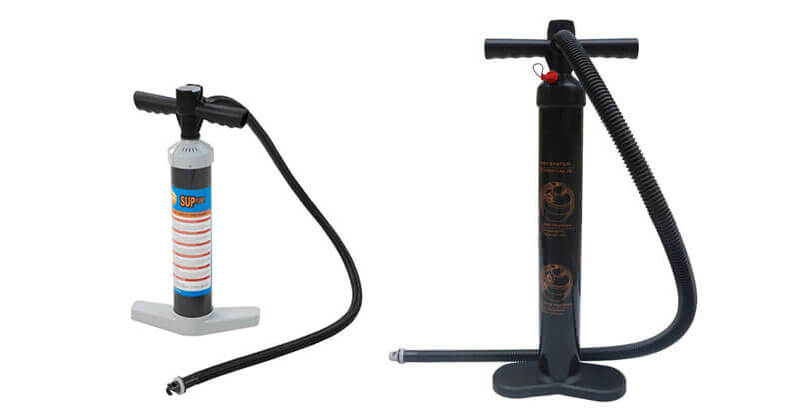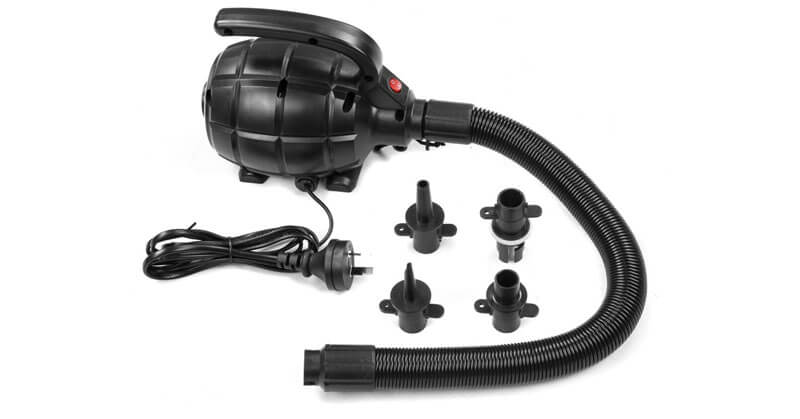Air Track inflation guide - mat pumps and pressure
Ensuring Excellence: Fine-Tuning Air Track Inflation for Peak Performance

Air tracks are simple to inflate in a variety of ways: with a hand pump, foot pump, or using an electric motorised pump.
The type of pump you use will depend on where you are, access to electricity and the size of your mat.
Larger mats and air barrels are best inflated using an electric pump due to their volume, however if you have no access to an electricity, such as at a park or outdoors, you may need a hand or foot pump.
How much should I inflate my air track?
Pumps for Air Tracks can be used to pump up inflatable stand-up paddle boards (iSUPs).
Air tracks and iSUPs have the same valve connection however the pressure requirements are vastly different for an airtrack and an iSUP.
Whereas the idea of inflating a paddle board is to make the board as rigid and firm as possible, an air track is designed to have some spring and softness for bounce and impact protection.
Air pressure in your gymnastics mat is measured in mBar (millibar) and/or PSI (pounds per square inch).
Many pumps have a pressure gauge which is mainly useful for paddle boards as they measure up to 10 or 15 psi (700 - 1,000 mBar). The pressure in an air track is usually pumped to a hardness determined by the 'feel' of the mat you require, which is around 0.5 to 1.5 psi (40 - 100 mBar); these levels of pressure may not show up on a gauge.
This guide demonstrates the difference in pressure requirements between Air Tracks and Paddle Boards:
| Product | mBar | PSI |
|---|---|---|
| Air track | 40 - 100 mBar | 0.5 - 1.5 psi |
| Paddle board | 700 - 1,000 mBar | 10 - 15 psi |

Air track foot pumps
Foot pumps are often supplied with the smaller 1 metre mats such as air spots and air blocks.
These single-action pumps are great for smaller mats and don't require a lot of effort as it is a little easier to pump with your leg rather than your arms.
They are not quite as fast as the hand or electric pumps but are still a great option and work well.

Air track hand pumps
Hand pumps are the best option for smaller mats or when you have no electricity available, like when you are taking your air track to a park or the beach. There are two types of hand pumps commonly available, single and dual action.
Single action hand pumps, pump air into the mat as you push down on the pump. This is the most common type of pump action you may be used to this if you have used a bike pump etc.
Dual action pumps, pump air into the mat as you pull up and as you push down on the pump. This means they will inflate your mat much faster. This double action is your best option if you have no access to electricity for an electric pump, especially for the larger mats.
The double action pumps switch to regular single action by opening a special valve cap on the pump. This is useful when the pressure becomes too difficult on the 'up' stroke, with the user only needing to apply pressure on the down-stroke like a regular pump.

Air track electric pumps
Electric pumps are the perfect option for all mats when you have electricity available. Electric pumps require no effort and pump your mat at least 20 times faster than any manual pump. The video shows inflation of a Powertrain 5 metre x 1 metre x 20cm Air track inflating to the ideal pressure in just 2 to 3 minutes.
These pumps usually inflate your mat to an ideal pressure and stop pumping when they reach their own pressure capacity (you will hear a change in the air/pump noise when the pump reaches its limit).
Electric pumps often have a reverse mode so you can use them to quickly deflate your mat. By switching the connection pipe to the opposite end of the pump it becomes a vacuum which very quickly deflates your air track, making it easy to roll up and pack away after use.
Because electric pumps require an electrical connection they are often not suitable for outdoors and in damp conditions, they should not be used on damp ground, or if you or the mat are wet.
The best combination for inflating your air track
Most air track users with smaller mats (1m x 1m) will have no problem using a simple manual pump. Users with larger mats in most cases would have 2 pumps, an electric pump for convenience at home, and a backup manual pump which can be used when electricity is not available.
In conclusion
To ensure your air track's optimal performance and longevity, choosing the right pump and maintaining the appropriate pressure is crucial. This article serves as a comprehensive guide, offering valuable insights for enthusiasts and professionals alike, aiming to enhance your training experience.

